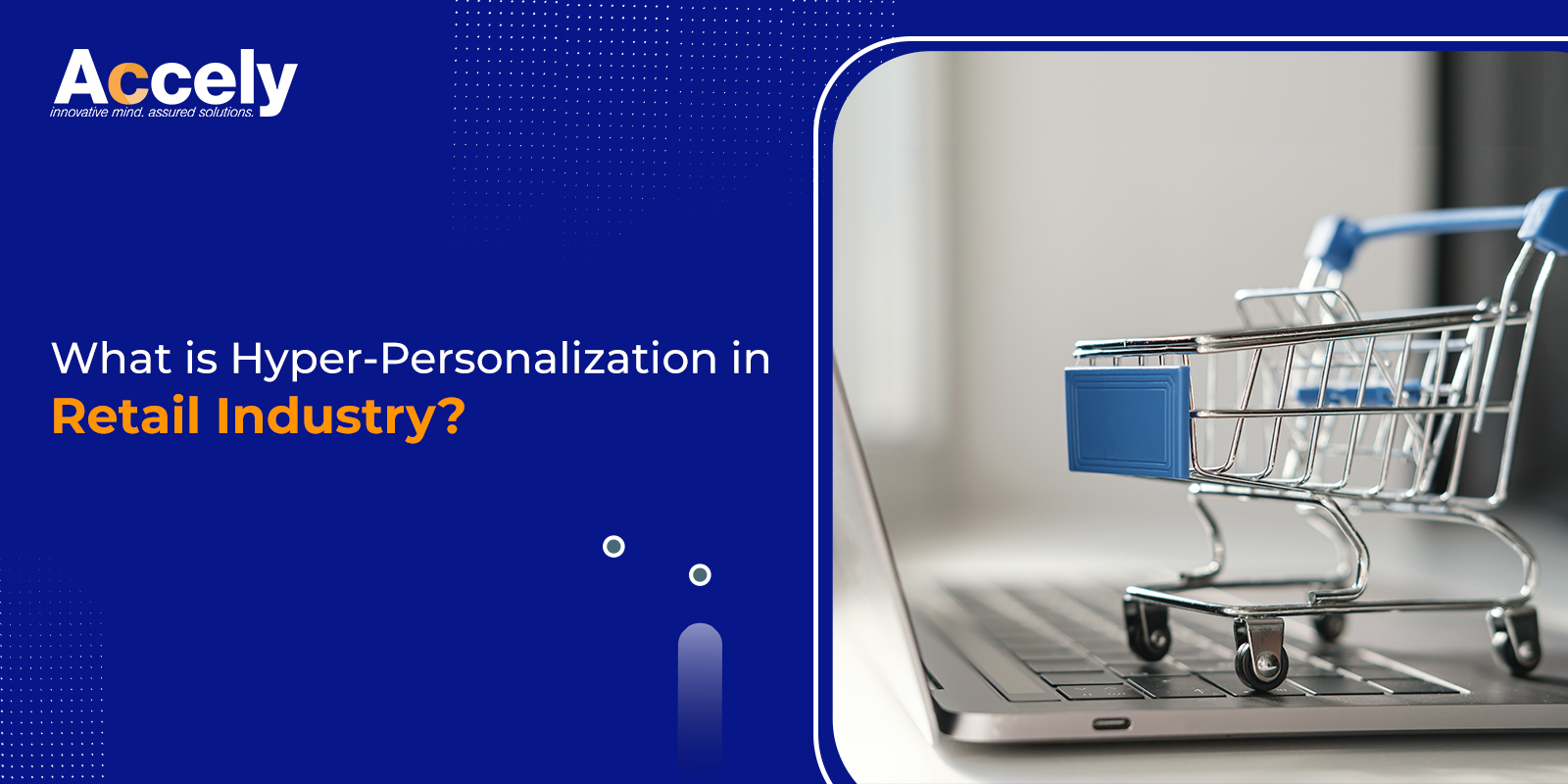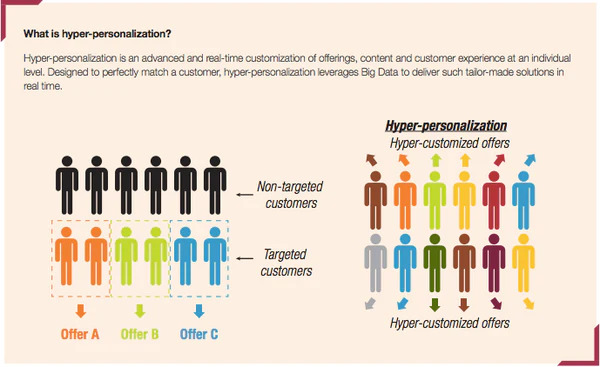What is Hyper-Personalization in Retail Industry?
14-Mar-2023Indeed, everyone loves personalized retail experiences. The concept of personalization started with the local brick-and-mortar store getting an understanding of your specific preferences and needs while recommending products to you based on available information. The same scope of advanced retail personalization can now be observed in e-commerce websites that go ahead with recommending products depending on recent purchases of consumers.
In the modern, digitized era, brands continue focusing on ensuring hyper-personalization in retail. Brands are nowadays evolving from only offering a siloed retail experience online or inside a store to a combination of both. Whether it is an e-commerce store or a brick-and-mortar setting, hyper-personalization in retail will always add great value to the entire customer experience.
What is Hyper-personalization in Retail?
Source: https://www.capgemini.com/
Hyper-personalization is typically a step taken further from only using the search history and name of the customers. Rather, it is regarded as an art of collecting real-time, behavioral data of customers (like in-app behavior, browsing behavior, engagement data, shopping carts, purchase data, use of devices, and searches).
When you are a retailer, you are expected to think of more ways to personalize the overall experience. Brands in the modern era are leveraging the power of cutting-edge technology towards driving retail personalization. With the advent of artificial intelligence, predictive analysis, and machine learning, retailers are nowadays leveraging the combination of both online and offline data towards building a holistic single customer in an effort to deliver unmatched customer satisfaction.
What are the Benefits of Hyper-personalization in Retail?
- Increase in Revenue and Conversions: Personalization in the domain of retail helps in engaging your customers with the help of the right experience as well as message. This will increase the chances of conversion -thereby maximizing revenue.
As per a study report, retailers witnessed around a 25 percent increase in overall revenues consistently due to the advanced personalization functionalities in the retail sector. It was also confirmed that a majority of customers revealed that they were more likely to include more items in their respective shopping carts if the overall experience was personalized.
- Improved Customer Lifetime Value: In-depth personalization will keep taking place across all stages of the entire customer lifecycle. You are able to personalize the communication as well as the experience -right from onboarding the customers to the moment they will check out and even beyond that.
It is recommended to make sure that all your channels are effectively integrated. Moreover, there should be ample continuity in communication as well as experience with end customers.
- Minimal Customer Churn: Personalization can help you in overcoming the evolving debate around the concept of acquisition versus retention. With the help of the right hyper-personalization processes in the retail industry, you can send over targeted promotions to the end customers depending on the time preference and purchase history. This approach can help you in building ample customer loyalty with improved engagement while ensuring that customers are coming back.
- Increase in Net Promoter Scores: A recent survey reports that customers who might have experienced a higher level of personalization were capable of scoring around 20 percent higher on the NPS (Net Promoter Score) for the retailers in comparison to those the users experiencing a reduced level of personalization.
It is important to know that NPS serves to be the metric for determining overall customer loyalty. A higher score in the NPS will indicate that the end customers are content with the services while recommending the same to others.
How to Achieve Hyper-personalization in the Retail Industry?
In-depth, hyper-personalization in the retail industry is concerned with the creation of micro-moments for the end customers. Some of the common approaches that can be used by players in the retail industry to personalize the experience of the end consumers are:
- Optimizing Targeting with the Help of Geo-Fencing
Retailers have now started leveraging the technology of GPS-centric geo-fencing to target potential customers. The concept of geo-fencing turns out to be a distinct approach then geo-targeting. Geo-fencing functions on a highly micro level.
Retailers can go ahead with defining a specific range around the location of their business. Therefore, anytime a customer will come close to your specified location, they will instantly receive a notification about the presence of your business. Geo-fencing helps in increasing the footfall in your retail store while also targeting the customers of the competitors in the exact location.
- Optimizing Messaging with the Help of AI
Customers now want brands to send meaningful messages to them. You can leverage the high-end technology of AI or Artificial Intelligence to optimize your brand messaging. AI will make sure that your message is highly personalized as well as relevant.
At the same time, AI will also help in eliminating all guesswork while informing you exactly the type of message that will resonate effectively with your customers. It will help in personalizing your brand message and building engagement with the customers. To make the most of the latest technological revolutions in the retail industry, you can implement SAP customer experiences for personalized messaging.
- Optimizing Engagement with Personalization
Customer engagement is immensely more complicated than acquiring a new customer. Therefore, you should focus on optimizing the customer engagement aspect across multiple channels and at all stages of the lifecycle of a customer. Ensure that the overall experiences and messaging are consistent. Leverage relevant customer-centric data to deliver personalized recommendations.
- Leveraging ERP and Supply Chain
When you wish to enhance customer experiences through personalization in the retail sector, optimizing ERP, supply chain pricing, order management, inventory, and fulfillment is the foundation to ensuring that your pricing is right.
- Leveraging In-store Experiential Technology
You can think of using cutting-edge technologies like sensor-based data and IoT solutions to collect customer-centric events while understanding their potential purchase intent. You can use these technologies to even direct customers to where they wish to go -before even deciding on the purchase.
Conclusion
If you wish to hyper-personalize your retail business, taking help from a professional SAP implementation partner can be useful. Personalization, enabled by SAP retail solutions, can help in building meaningful relationships, increasing customers’ lifetime value, and improving customer engagement for your retail business.
Are you in search of a reliable SAP implementation partner? We can be your best bet! We come up with revolutionary SAP retail solutions to help you streamline your retail business according to the diverse needs and preferences of the end consumers.













